- Home
- Mercedes Lackey
Werehunter (anthology)
Werehunter (anthology) Read online
Werehunter (anthology)
Mercedes Lackey
Werehunter is a short story collection of Mercedes Lackey's early work.
Lope through the night with a young woman who has been given the power to transform herself into a leopard, but who now finds herself pursued by a hunter who is more than human: Follow the adventures of Skitty, ship's cat extraordinaire, and telepathic problem-solver. Ride with a late night driver on a solitary road who learns that what appears to be a piece of cardboard blowing across the road is actually something very sinister in disguise. Join Lackey's celebrated occult detective Diana Tregarde as she attends a gathering of romance writers and encounters a visitor whose passionate desire is for fresh, warm blood. Return to the world of the Heralds of Valdemar. And there's much more.
Lackey's many fans will know what to expect: unforgettable characters in spellbinding stories from a grand master of fantasy and science fiction. And readers just discovering her have a treat in store.
The story Werehunter was originally the song Golden Eyes on the album Magic, Moondust & Melancholy
Stories include:
Werehunter
SKitty
A Tale of Two SKitties
SCat
A Better Mousetrap
The Last of the Season
Satanic, Versus
Nightside
Wet Wings
Stolen Silver
Roadkill
Operation Desert Fox
Grey
Grey's Ghost
Werehunter
Mercedes Lackey
This is a work of fiction. All the characters and events portrayed in this book are fictional, and any resemblance to real people or incidents is purely coincidental.
Copyright © 1999 by Mercedes Lackey
“Werehunter” copyright © 1989 (Tales of the Witch World); “SKitty” copyright © 1991 (Catfantastic, Andre Norton, ed.); “A Tail of Two SKitties copyright © 1994 (Catfantastic 3, Andre Norton and Martin Greenberg, eds.); “SCat” copyright © 1996 (Catfantastic 4, Andre Norton and Martin Greenberg, eds.); “A Better Mousetrap” copyright © 1999 (Werehunter, Baen Books); “The Last of the Season” copyright © American Fantasy Magazine; “Satanic, Versus …” copyright © 1990 (Marion Zimmer Bradley’s Fantasy Magazine, Fall 1990); “Nightside” copyright © 1990 (Marion Zimmer Bradley’s Fantasy Magazine, Spring 1990); “Wet Wings” copyright © 1995 (Sisters of Fantasy 2, Susan Shwartz and Martin Greenberg, ed.); “Stolen Silver” copyright © 1991 (Horse Fantastic); “Roadkill” copyright © 1990 (Marion Zimmer Bradley’s Fantasy Magazine, Summer 1990); “Operation Desert Fox” copyright © 1993 (Honor of the Regiment: Bolos, Book I, eds. Keith Laumer and Bill Fawcett); “Grey” copyright © 1997 (Sally Blanchard’s Pet Bird Report October 1997); “Grey’s Ghost” copyright © 1999 (Werehunter, Baen Books)
All rights reserved, including the right to reproduce this book or portions thereof in any form.
A Baen Books Original
Baen Publishing Enterprises
P.O. Box 1403
Riverdale, NY 10471
ISBN: 0-671-57805-7
Cover art by Bob Eggleton
First printing, April 1999
Distributed by Simon and Schuster
1230 Avenue of the Americas
New York, NY 10020
Typeset by Windhaven Press, Auburn, NH
Printed in the United States of America
TWO OUT OF THREE AIN’T BAD . . .
Something very large occluded the light for a moment in the next room, then the lights went out, and Diana Tregarde distinctly heard the sound of the chandelier being torn from the ceiling and thrown against the wall. She winced.
There go my Romance Writers of the World dues up again, she thought.
“I got a glimpse,” Andre said. “It was very large, perhaps ten feet tall, and—cherie, looked like nothing so much as a rubber creature from a very bad movie. Except that I do not think it was rubber.”
What shambled in through the door was nothing that Diana had ever heard of. It was, indeed, about ten feet tall. It was covered with luxuriant brown hair—all over. It was built along the lines of a powerful body-builder, taken to exaggerated lengths, and it drooled. It also stank, a combination of sulfur and musk so strong it would have brought tears to the eyes of a skunk.
Di groaned, putting two and two together and coming up with—Valentine Vervain cast a spell for a tall, dark and handsome soul-mate, but she forgot to specify “human.” “Are you thinking what I’m thinking?”
The other writer nodded. “Tall, check. Dark, check. Long hair, check. Handsome—well, I suppose in some circles.” Harrison stared at the thing in fascination.
The thing saw Valentine and lunged for her. Reflexively, Di and Harrison both shot. He emptied his cylinder and one speed loader. Di gave up after four shots. No effect. The thing backhanded Andre into a wall hard enough to put him through plasterboard. Andre was out for the count. There are some things even a vampire has a little trouble recovering from.
“Harrison, distract it, make a noise, anything!” Diana pulled the atheme from her boot sheath and began cutting Sigils in the air with it, getting the Words of Dismissal out as fast as she could without slurring the syllables.
The thing lunged toward Harrison, missing him by inches, just as Di concluded the Ritual of Dismissal.
To no effect. . . .
—from “Satanic, Versus …”
Introduction
Those of you who are more interested in the stories than in some chatty author stuff should just skip this part, since it will be mostly about the things people used to ask us about at science fiction conventions.
For those of you who have never heard of SF conventions (or “cons” as they are usually called), these are gatherings of people who are quite fanatical about their interest in one or more of the various fantasy and science fiction media. There are talks and panel discussions on such wildly disparate topics as costuming, prop-making, themes in SF/F literature, Star Wars, Star Trek, Babylon 5, X-Files, SF/F art, medieval fighting, horse-training, dancing, and the world of fans in general. There are workshops on writing and performance arts. Guests featured in panels and question and answer sessions are often featured performers from television and movies along with various authors and the occasional professional propmaker. Larry and I no longer attend conventions for a number of reasons, not the least of which is that we have a great many responsibilities that require us to be home.
Some of those responsibilities are that we are volunteers for our local fire department. Larry is a driver and outside man; I am learning to do dispatch, and hopefully will be able to take over the night shift, since we are awake long after most of the rest of the county has gone to sleep. Our local department is strictly volunteer and works on a very tight budget. Our equipment is old and needs frequent repair, we get what we can afford, and what we can afford is generally third or fourth-hand, having passed through a large metropolitan department or the military to a small municipal department to the Forestry Service and finally to us. In summer I am a water-carrier at grass-fires, meaning that I bring drinking-water to the overheated firefighters so they don’t collapse in the 100 plus degree heat.
Another duty is with the EOC (formerly called the Civil Defense Office). When we are under severe weather conditions, the firefighters are called in to wait at the station in case of emergency, so Larry is there. I go in to the EOC office to read weather-ra
dar for the storm-watchers in the field. Eventually I hope to get my radio license so I can also join the ranks of the storm-watchers. We don’t “chase” as such, although there are so few of the storm-watchers that they may move to active areas rather than staying put. Doppler radar can only give an indication of where there is rotation in the clouds; rotation may not produce a tornado. You have to have people on the ground in the area to know if there is a funnel or a tornado (technically, it isn’t a tornado until it touches the ground; until then it is a funnel-cloud). Our area of Oklahoma is not quite as active as the area of the Panhandle or around Oklahoma City and Norman (which is why the National Severe Storms Laboratory is located there) but we get plenty of severe, tornado-producing storms.
In addition, we have our raptor rehabilitation duties.
Larry and I are raptor rehabilitators; this means that we are licensed by both the state and the federal government to collect, care for, and release birds of prey that are injured or ill. Occasionally we are asked to bring one of our “patients” for a talk to a group of adults or children, often under the auspices of our local game wardens.
I’m sure this sounds very exciting and glamorous, and it certainly impresses the heck out of people when we bring in a big hawk riding on a gloved hand, but there are times when I wonder how we managed to get ourselves into this.
We have three main “seasons”—baby season, stupid fledgling season, and inexpert hunter season.
Now, injuries—and victims of idiots with guns—can come at any time. We haven’t had too many shooting victims in our area, thank heavens, in part because the cattle-farmers around our area know that shooting a raptor only adds field rats and mice to their property. But another rehabber gave up entirely a few years ago, completely burned out, because she got the same redtail hawk back three times, shot out of the sky. Injuries that we see in our area are most often the case of collision—literally—with man’s environmental changes. Birds hit windows that seem to them to be sky, Great Blue Herons collide with power-lines, raptors get electrocuted by those same lines. But most often, we get birds hit by cars. Owls will chase prey across the road, oblivious to the fact that something is approaching, and get hit. Raptors are creatures of opportunity and will quite readily come down to feed on roadkill and get hit. Great Horned Owls, often called the “tigers of the sky,” are top predators, known to chase even eagles off nests to claim the nest for themselves—if a Great Horned is eating roadkill and sees a car approaching, it will stand its ground, certain that it will get the better of anything daring to try to snatch its dinner! After all, they have been developing and evolving for millions of years, and swiftly moving vehicles have only been around for about seventy-five years; they haven’t had nearly enough time to adapt to the situation as a species. Individuals do learn, though, often to take advantage of the situation. Kestrels and redtails are known to hang around fields being harvested to snatch the field-rats running from the machinery, or suddenly exposed after the harvesters have passed. Redtails are also known to hang about railway right-of-ways, waiting for trains to spook out rabbits!
Our current education bird, a big female redtail we call Cinnamon, is one such victim; struck in the head by a CB whip-antenna, she has only one working eye and just enough brain damage to render her partially paralyzed on one side and make her accepting and calm in our presence. This makes her a great education-bird, as nothing alarms her and children can safely touch her, giving them a new connection with wild things that they had never experienced before.
But back to the three “seasons” of a raptor rehabber, and the different kinds of work they involve.
First is “baby season,” which actually extends from late February through to July, beginning with Great Horned Owl babies and ending when the second round of American Kestrels (sparrowhawks, or “spawks” as falconers affectionately call them) begins to push their siblings out of nests. The first rule of baby season is—try to get the baby back into the nest, or something like the nest. Mother birds are infinitely better at taking care of their youngsters than any human, so when wind or weather send babies (eyases, is the correct term) tumbling, that is our first priority. This almost always involves climbing, which means that poor Larry puts on his climbing gear and dangles from trees. When nest and all have come down, we supply a substitute, in as close to the same place as possible; raptor mothers are far more fixated on the kids than the house, and a box filled with branches will do nicely, thank you.
Sometimes, though, it’s not possible to put the eyases back. Youngsters are found with no nest in sight, or the nest is literally unreachable (a Barn Owl roost in the roof of an institution for the criminally insane, for instance), or worst of all, the parents are known to be dead.
Young raptors eat a lot. Kestrels need feeding every hour or so, bigger birds every two to three, and that’s from dawn to dusk. We’ve taken eyases with us to doctor’s appointments, on vacation, on shopping expeditions, and even to racing school! And we’re not talking Gerber’s here; “mom” (us) gets to take the mousie, dissect the mousie, and feed the mousie parts to baby. By hand. Yummy! Barred Owl eyases are the easiest of the lot; they’ll take minnows, which are of a size to slip down their little throats easily, but not the rest. There’s no use thinking you can get by with a little chicken, either—growing babies need a lot of calcium for those wonderful hollow bones that they’re growing so fast, so they need the whole animal.
Fortunately, babies do grow up, and eventually they’ll feed themselves. Then it’s just a matter of helping them learn to fly (which involves a little game we call “Hawk Tossing”) and teaching them to hunt. The instincts are there; they just need to connect instinct with practice. But this is not for the squeamish or the tender-hearted; for the youngsters to grow up and have the skills to make them successful, they have to learn to kill.
The second season can stretch from late April to August, and we call it “silly fledgling season.” That’s when the eyases, having learned to fly at last, get lost. Raptor mothers—with the exception of Barn Owls—continue to feed the youngsters and teach them to hunt after they’ve fledged, but sometimes wind and weather again carry the kids off beyond finding their way back to mom. Being inexperienced flyers and not hunters at all yet, they usually end up helpless on the ground, which is where we come in.
These guys are actually the easiest and most rewarding; they know the basics of flying and hunting, and all we have to do is put some meat back on their bones and give them a bit more experience. We usually have anywhere from six to two dozen kestrels at this stage every year, which is when we get a fair amount of exercise, catching grasshoppers for them to hunt.
Then comes the “inexpert hunter” season, and I’m not referring to the ones with guns. Some raptors are the victims of a bad winter, or the fact that they concentrated on those easy-to-kill grasshoppers while their siblings had graduated to more difficult prey. Along about December, we start to get the ones that nothing much is wrong with except starvation. Sometimes starvation has gone too far for them to make it; frustrating and disappointing for us.
We’ve gotten all sorts of birds over the years; our wonderful vet, Dr. Paul Welch (on whom may blessings be heaped!) treats wildlife for free, and knows that we’re always suckers for a challenge, so he has gotten some of the odder things to us. We’ve had two Great Blue Herons, for instance. One was an adult that had collided with a powerline. It had a dreadful fracture, and we weren’t certain if it would be able to fly again (it did) but since we have a pond, we figured we could support a land-bound heron. In our ignorance, we had no idea that Great Blues are terrible challenges to keep alive because they are so shy; we just waded right in, force-feeding it minnows when it refused to eat, and stuffing the minnows right back down when it tossed them up. This may not sound so difficult, but remember that a Great Blue has a two-foot sword on the end of its head, a spring-loaded neck to put some force behind the stab, and the beak-eye coordination to i
mpale a minnow in a foot of water. It has no trouble targeting your eye.
We fed it wearing welding-masks.
We believe very strongly in force-feeding; our experience has been that if you force-feed a bird for two to three days, it gives up trying to die of starvation and begins eating on its own. Once again, mind you, this is not always an easy proposition; we’re usually dealing with fully adult birds who want nothing whatsoever to do with us, and have the equipment to enforce their preferences. We very seldom get a bird that is so injured that it gives us no resistance. Great Horned Owls can exert pressure of 400 ft/lbs per talon, which can easily penetrate a Kevlar-lined welding glove, as I know personally and painfully.
That is yet another aspect of rehabbing that most people don’t think about—injury. Yours, not the bird’s. We’ve been “footed” (stabbed with talons), bitten, pooped on (okay, so that’s not an injury, but it’s not pleasant), gouged, and beak-slashed. And we have to stand there and continue doing whatever it was that earned us those injuries, because it certainly isn’t the bird’s fault that he doesn’t recognize the fact that you’re trying to help him.
We also have to know when we’re out of our depth, or when the injury is so bad that the bird isn’t releasable, and do the kind and responsible thing. Unless a bird is so endangered that it can go into a captive breeding project, or is the rare, calm, quiet case like Cinnamon who will be a perfect education bird, there is no point in keeping one that can’t fly or hunt again. You learn how to let go and move on very quickly, and just put your energy into the next one.

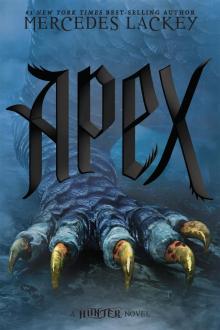 Apex: A Hunter Novel
Apex: A Hunter Novel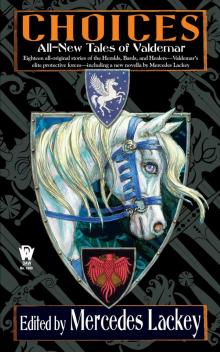 Choices
Choices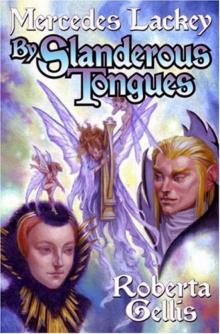 By Slanderous Tongues
By Slanderous Tongues Spy, Spy Again
Spy, Spy Again Eye Spy
Eye Spy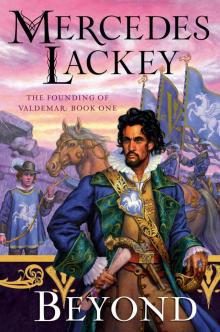 Beyond
Beyond The Snow Queen
The Snow Queen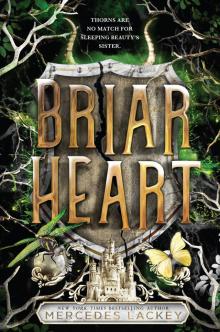 Briarheart
Briarheart Bedlam Boyz
Bedlam Boyz The Mage Wars
The Mage Wars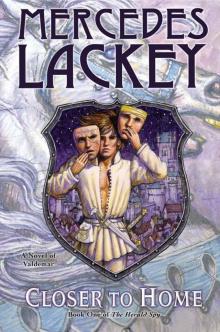 Closer to Home: Book One of Herald Spy
Closer to Home: Book One of Herald Spy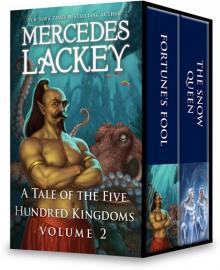 A Tale of the Five Hundred Kingdoms, Volume 2
A Tale of the Five Hundred Kingdoms, Volume 2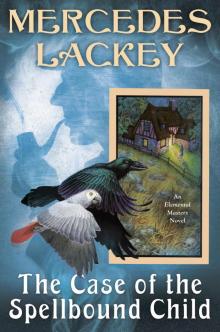 The Case of the Spellbound Child
The Case of the Spellbound Child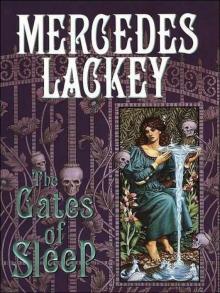 The Gates of Sleep em-3
The Gates of Sleep em-3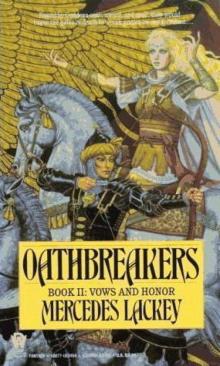 Oathbreaker v(vah-2
Oathbreaker v(vah-2![Valdemar 06 - [Exile 02] - Exile’s Valor Read online](http://i1.bookreadfree.com/i/03/20/valdemar_06_-_exile_02_-_exiles_valor_preview.jpg) Valdemar 06 - [Exile 02] - Exile’s Valor
Valdemar 06 - [Exile 02] - Exile’s Valor Beyond World's End
Beyond World's End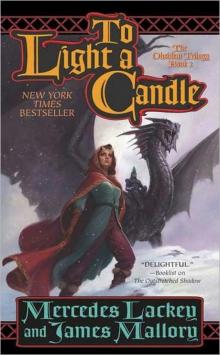 To Light a Candle
To Light a Candle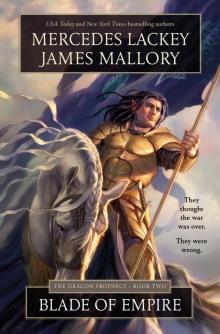 Blade of Empire
Blade of Empire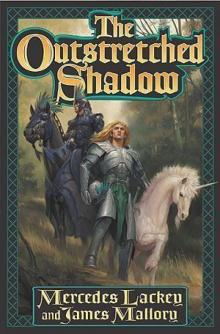 The Outstretched Shadow ou(tom-1
The Outstretched Shadow ou(tom-1 REBOOTS
REBOOTS From a High Tower
From a High Tower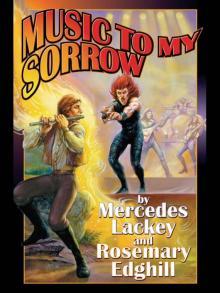 Music to My Sorrow
Music to My Sorrow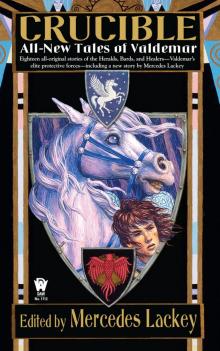 Crucible
Crucible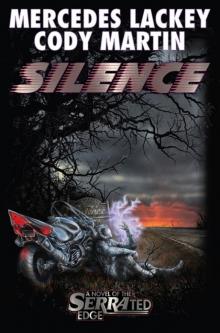 Silence
Silence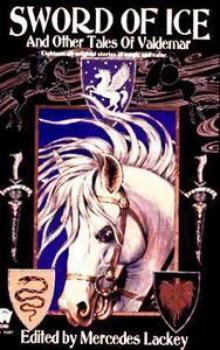 Sword of Ice v(-11
Sword of Ice v(-11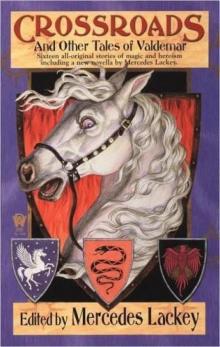 Crossroads and Other Tales of Valdemar v(-101
Crossroads and Other Tales of Valdemar v(-101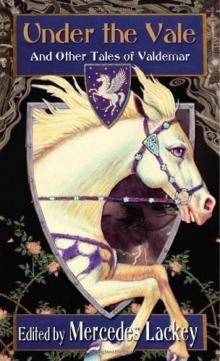 Under The Vale And Other Tales Of Valdemar v(-105
Under The Vale And Other Tales Of Valdemar v(-105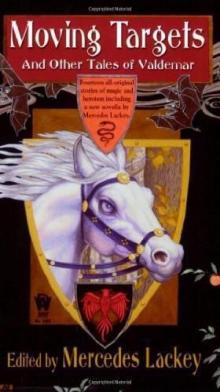 Moving Targets and Other Tales of Valdemar v(-102
Moving Targets and Other Tales of Valdemar v(-102 The House of the Four Winds: Book One of One Dozen Daughters
The House of the Four Winds: Book One of One Dozen Daughters![Valdemar 06 - [Exile 01] - Exile’s Honor Read online](http://i1.bookreadfree.com/i/03/22/valdemar_06_-_exile_01_-_exiles_honor_preview.jpg) Valdemar 06 - [Exile 01] - Exile’s Honor
Valdemar 06 - [Exile 01] - Exile’s Honor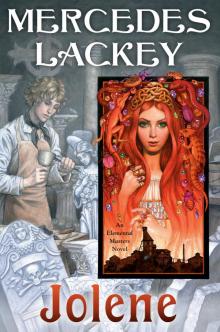 Jolene
Jolene Novel - Arcanum 101 (with Rosemary Edghill)
Novel - Arcanum 101 (with Rosemary Edghill) Tempest
Tempest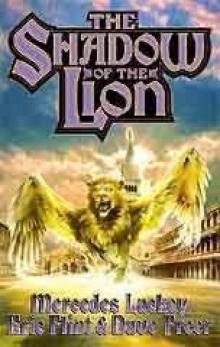 Shadow of the Lion hoa-1
Shadow of the Lion hoa-1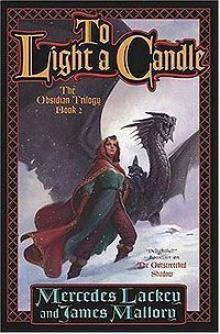 To Light A Candle ou(tom-2
To Light A Candle ou(tom-2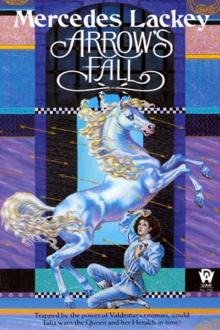 Arrow's Fall
Arrow's Fall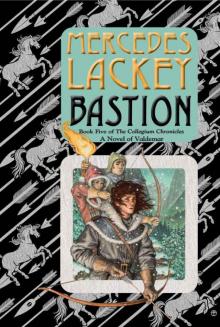 Bastion
Bastion Snow Queen fhk-4
Snow Queen fhk-4 A Tail of Two SKittys s-2
A Tail of Two SKittys s-2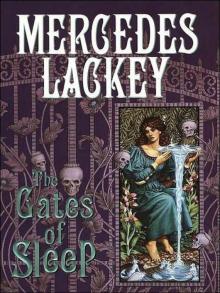 The Gates of Sleep
The Gates of Sleep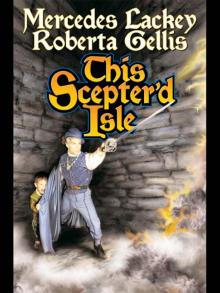 This Scepter'd Isle
This Scepter'd Isle Two-Edged Blade v(bts-2
Two-Edged Blade v(bts-2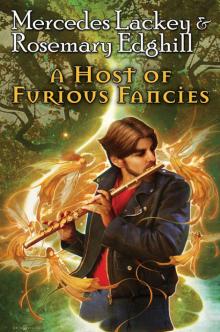 A Host of Furious Fancies
A Host of Furious Fancies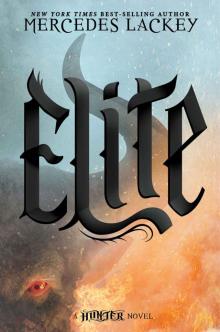 Elite: A Hunter novel
Elite: A Hunter novel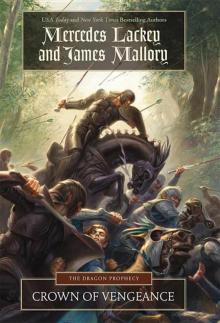 Crown of Vengeance dpt-1
Crown of Vengeance dpt-1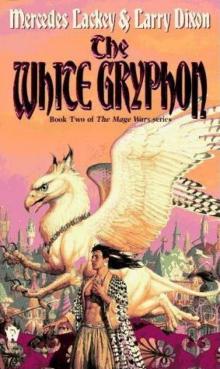 The White Gryphon v(mw-2
The White Gryphon v(mw-2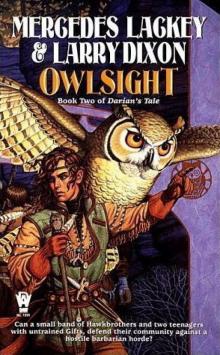 Owlsight v(dt-2
Owlsight v(dt-2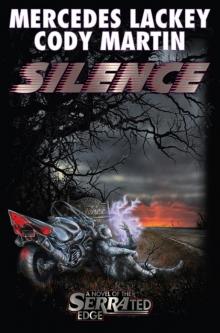 Silence - eARC
Silence - eARC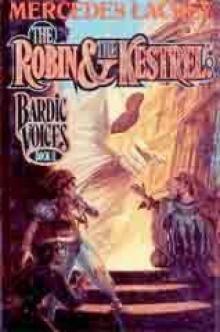 The Robin And The Kestrel bv-2
The Robin And The Kestrel bv-2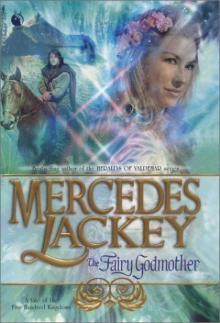 Fairy Godmother fhk-1
Fairy Godmother fhk-1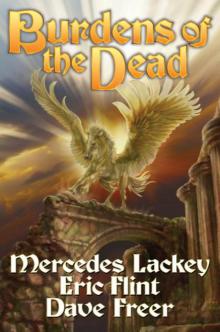 Burdens of the Dead
Burdens of the Dead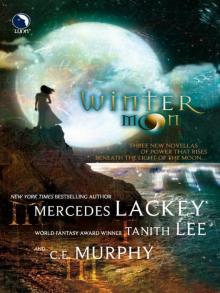 Wintermoon
Wintermoon![Valdemar 09 - [Mage Winds 01] - Winds of Fate Read online](http://i1.bookreadfree.com/i/03/24/valdemar_09_-_mage_winds_01_-_winds_of_fate_preview.jpg) Valdemar 09 - [Mage Winds 01] - Winds of Fate
Valdemar 09 - [Mage Winds 01] - Winds of Fate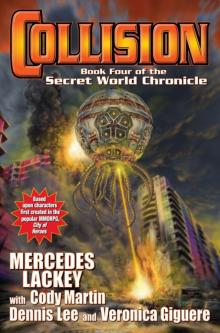 Collision: Book Four in the Secret World Chronicle - eARC
Collision: Book Four in the Secret World Chronicle - eARC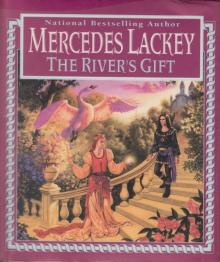 The River's Gift
The River's Gift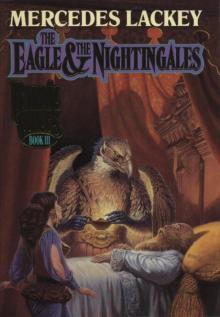 The Eagle & the Nightingales: Bardic Voices, Book III
The Eagle & the Nightingales: Bardic Voices, Book III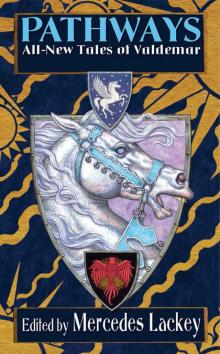 Pathways
Pathways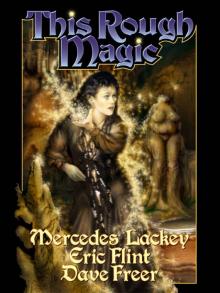 This Rough Magic
This Rough Magic Take a Thief
Take a Thief Much Fall of Blood-ARC
Much Fall of Blood-ARC Sacred Ground
Sacred Ground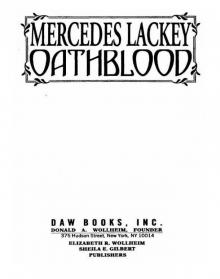 Oathblood
Oathblood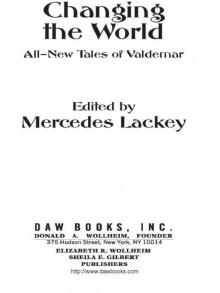 Changing the World
Changing the World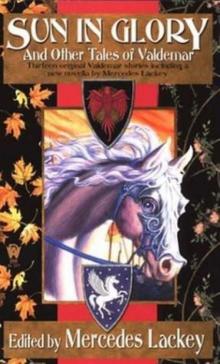 Sun in Glory and Other Tales of Valdemar v(-100
Sun in Glory and Other Tales of Valdemar v(-100![[500 Kingdoms 04] - The Snow Queen Read online](http://i1.bookreadfree.com/i/03/24/500_kingdoms_04_-_the_snow_queen_preview.jpg) [500 Kingdoms 04] - The Snow Queen
[500 Kingdoms 04] - The Snow Queen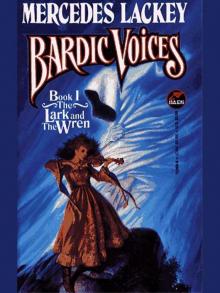 Lark and Wren
Lark and Wren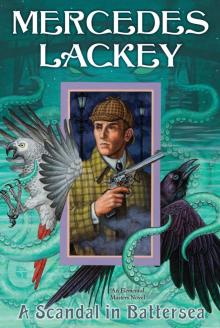 A Scandal in Battersea
A Scandal in Battersea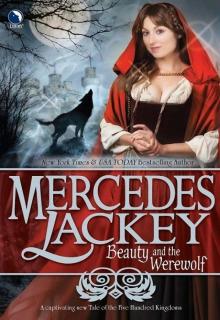 Beauty and the Werewolf fhk-6
Beauty and the Werewolf fhk-6 Moontide (five hundred kingdoms)
Moontide (five hundred kingdoms)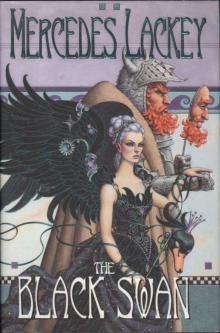 The Black Swan
The Black Swan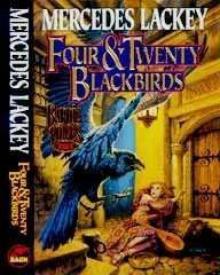 Four and Twenty Blackbirds bv-4
Four and Twenty Blackbirds bv-4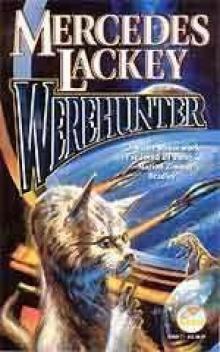 Stolen Silver (valdemar (05))
Stolen Silver (valdemar (05)) No True Way
No True Way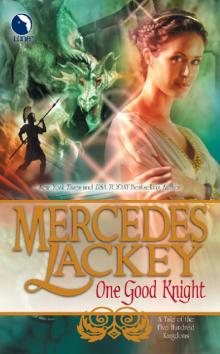 One Good Knight
One Good Knight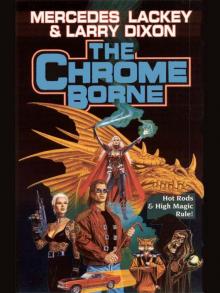 The Chrome Borne
The Chrome Borne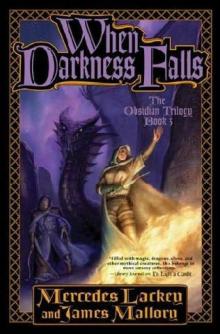 When Darkness Falls
When Darkness Falls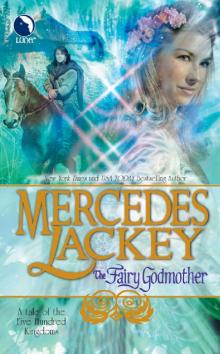 The Fairy Godmother
The Fairy Godmother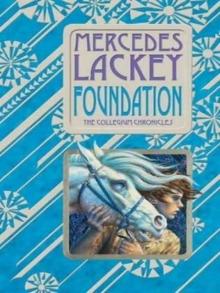 Foundation
Foundation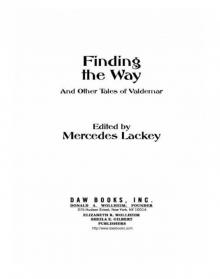 Finding the Way and Other Tales of Valdemar
Finding the Way and Other Tales of Valdemar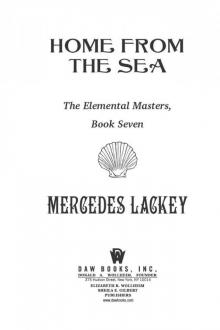 Home From the Sea: An Elemental Masters Novel
Home From the Sea: An Elemental Masters Novel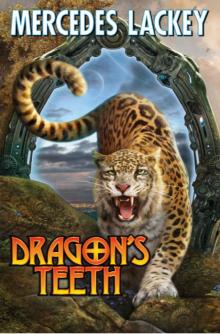 Dragon's Teeth
Dragon's Teeth Brightly Burning
Brightly Burning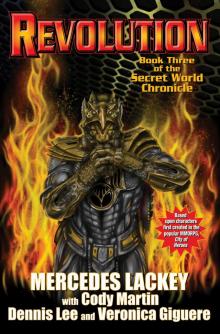 Revolution: Book Three of the Secret World Chronicle - eARC
Revolution: Book Three of the Secret World Chronicle - eARC The Outstretched Shadow
The Outstretched Shadow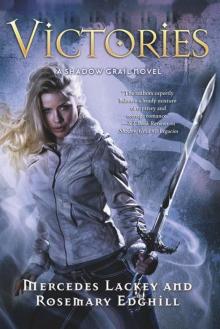 Victories
Victories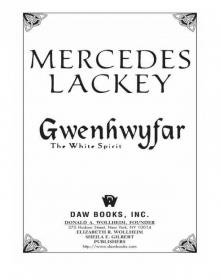 Gwenhwyfar
Gwenhwyfar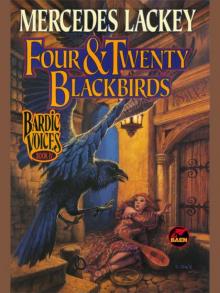 Four and Twenty Blackbirds
Four and Twenty Blackbirds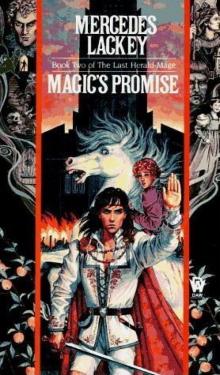 Magic's Promise v(lhm-2
Magic's Promise v(lhm-2 The Last Herald-Mage Trilogy
The Last Herald-Mage Trilogy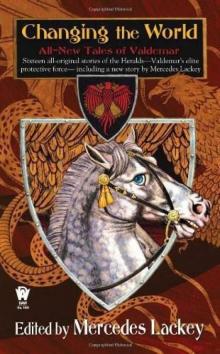 Changing the World: All-New Tales of Valdemar v(-103
Changing the World: All-New Tales of Valdemar v(-103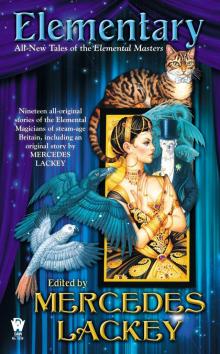 Elementary
Elementary Castle of Deception bt-1
Castle of Deception bt-1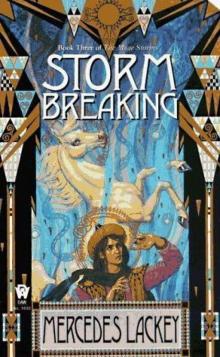 Storm Breaking v(ms-3
Storm Breaking v(ms-3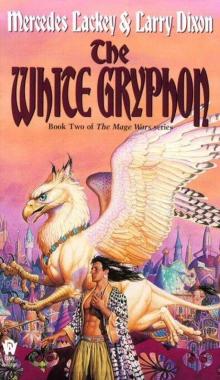 The white gryphon
The white gryphon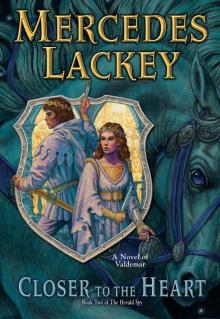 Closer to the Heart
Closer to the Heart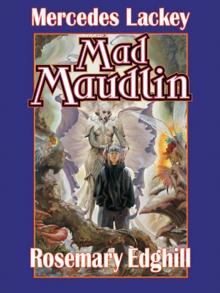 Mad Maudlin
Mad Maudlin Reserved for the Cat em-6
Reserved for the Cat em-6 Sanctuary dj-3
Sanctuary dj-3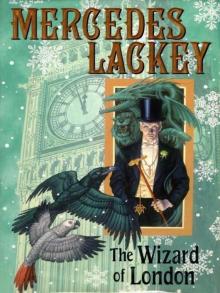 The Wizard of London em-5
The Wizard of London em-5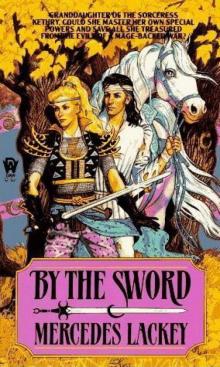 Kerowyn's Ride v(bts-1
Kerowyn's Ride v(bts-1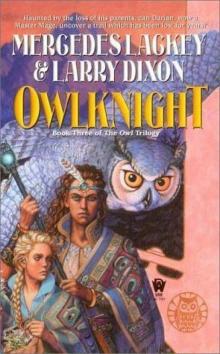 Owlknight v(dt-3
Owlknight v(dt-3![Dragon's Teeth [Martis series 2] Read online](http://i1.bookreadfree.com/i1/04/02/dragons_teeth_martis_series_2_preview.jpg) Dragon's Teeth [Martis series 2]
Dragon's Teeth [Martis series 2]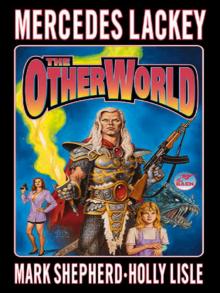 The Otherworld
The Otherworld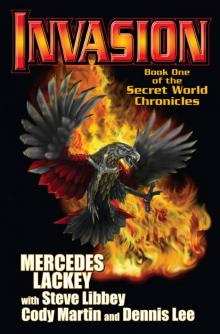 Invasion: Book One of the Secret World Chronicle-ARC
Invasion: Book One of the Secret World Chronicle-ARC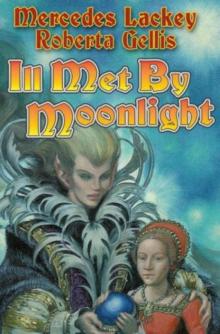 Ill Met by Moonlight
Ill Met by Moonlight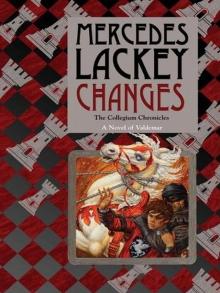 Changes
Changes No True Way: All-New Tales of Valdemar (Tales of Valdemar Series Book 8)
No True Way: All-New Tales of Valdemar (Tales of Valdemar Series Book 8) Redoubt
Redoubt![Valdemar Anthology - [Tales of Valdemar 02] - Sun in Glory and Other Tales of Valdemar Read online](http://i1.bookreadfree.com/i1/04/04/valdemar_anthology_-_tales_of_valdemar_02_-_sun_in_glory_and_other_tales_of_valdemar_preview.jpg) Valdemar Anthology - [Tales of Valdemar 02] - Sun in Glory and Other Tales of Valdemar
Valdemar Anthology - [Tales of Valdemar 02] - Sun in Glory and Other Tales of Valdemar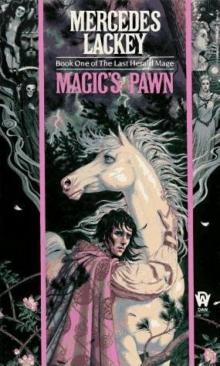 Magic's Pawn v(lhm-1
Magic's Pawn v(lhm-1 Sanctuary
Sanctuary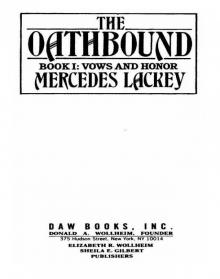 The Oathbound
The Oathbound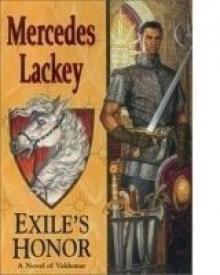 Exile's Honor v(-1
Exile's Honor v(-1![Nightside [Diana Tregarde series] Read online](http://i1.bookreadfree.com/i1/04/04/nightside_diana_tregarde_series_preview.jpg) Nightside [Diana Tregarde series]
Nightside [Diana Tregarde series]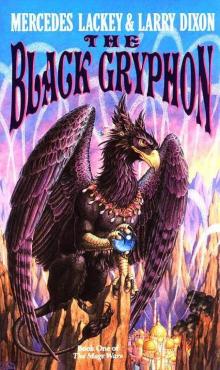 The black gryphon
The black gryphon By Tooth and Claw - eARC
By Tooth and Claw - eARC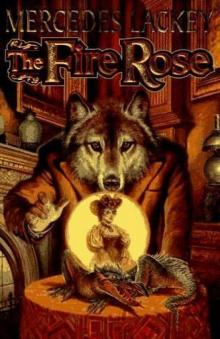 The Fire Rose em-1
The Fire Rose em-1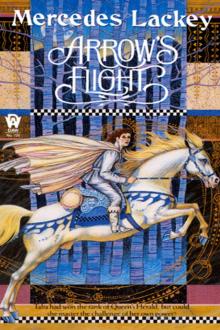 Arrow's Flight
Arrow's Flight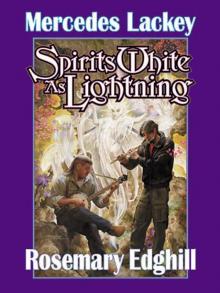 Spirits White as Lightning
Spirits White as Lightning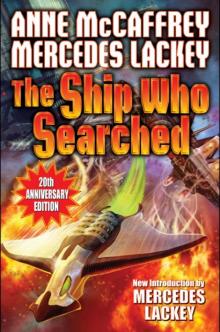 Ship Who Searched
Ship Who Searched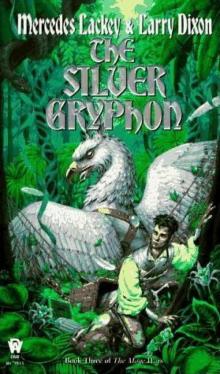 The Silver Gryphon v(mw-3
The Silver Gryphon v(mw-3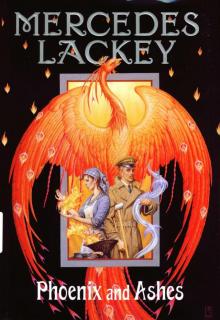 Phoenix and Ashes em-4
Phoenix and Ashes em-4 Sleeping Beauty fhk-5
Sleeping Beauty fhk-5 Crossroads and Other Tales of Valdemar
Crossroads and Other Tales of Valdemar Take A Thief v(-3
Take A Thief v(-3 The Sleeping Beauty
The Sleeping Beauty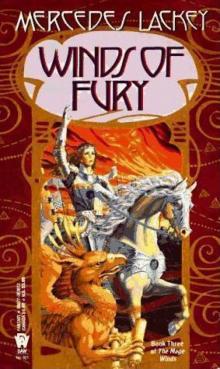 Winds Of Fury v(mw-3
Winds Of Fury v(mw-3![Valdemar 11 - [Owl Mage 03] - Owlknight Read online](http://i1.bookreadfree.com/i2/04/08/valdemar_11_-_owl_mage_03_-_owlknight_preview.jpg) Valdemar 11 - [Owl Mage 03] - Owlknight
Valdemar 11 - [Owl Mage 03] - Owlknight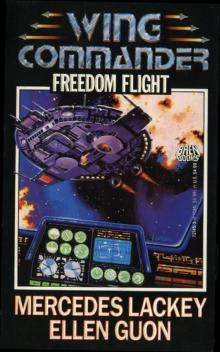 Wing Commander: Freedom Flight
Wing Commander: Freedom Flight Aerie
Aerie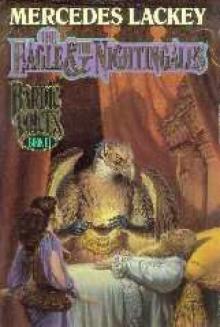 The Eagle And The Nightingales bv-3
The Eagle And The Nightingales bv-3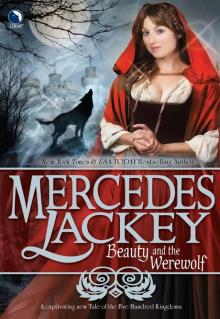 Beauty and the Werewolf
Beauty and the Werewolf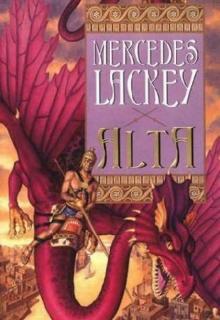 Alta dj-2
Alta dj-2 Unnatural Issue
Unnatural Issue A Study in Sable
A Study in Sable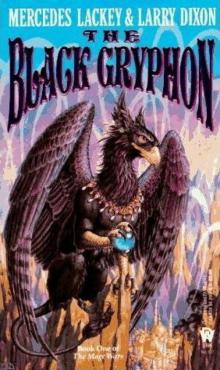 The Black Gryphon v(mw-1
The Black Gryphon v(mw-1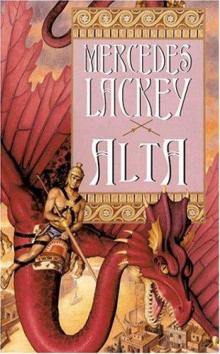 Alta
Alta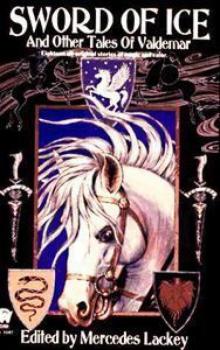 Blue Heart v(-2
Blue Heart v(-2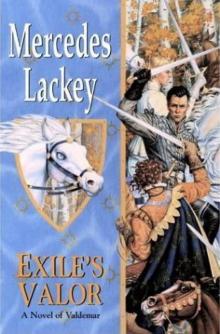 Exile's Valor v(-2
Exile's Valor v(-2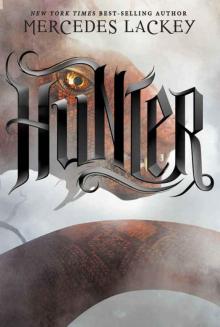 Hunter
Hunter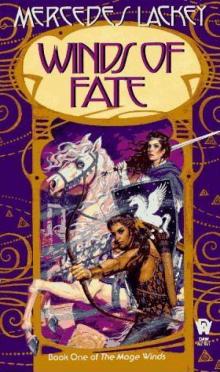 Winds Of Fate v(mw-1
Winds Of Fate v(mw-1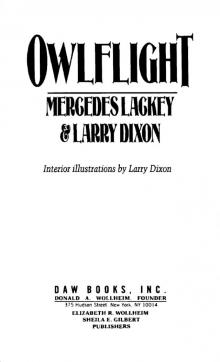 Owlflight
Owlflight Magic's Promise
Magic's Promise Oathbound v(vah-1
Oathbound v(vah-1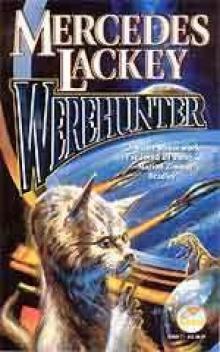 A Better Mousetrap s-4
A Better Mousetrap s-4 Joust dj-1
Joust dj-1 Born to Run
Born to Run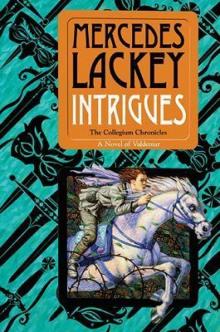 Intrigues v(cc-2
Intrigues v(cc-2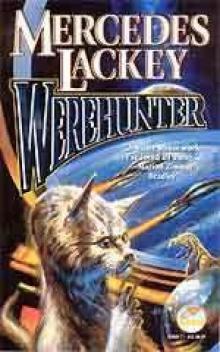 SCat s-3
SCat s-3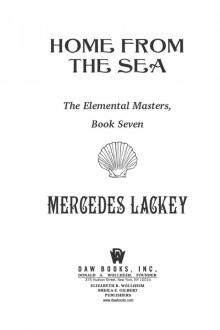 Home From The Sea: The Elemental Masters, Book Seven
Home From The Sea: The Elemental Masters, Book Seven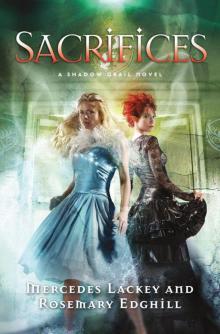 Sacrifices
Sacrifices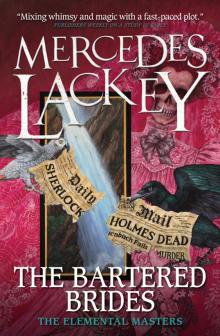 The Bartered Brides (Elemental Masters)
The Bartered Brides (Elemental Masters)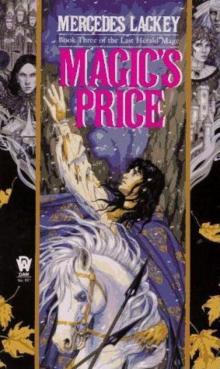 Magic's Price v(lhm-3
Magic's Price v(lhm-3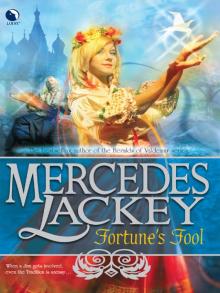 Fortune s Fool
Fortune s Fool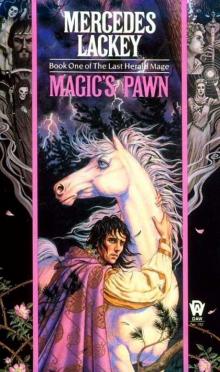 Magic's Pawn
Magic's Pawn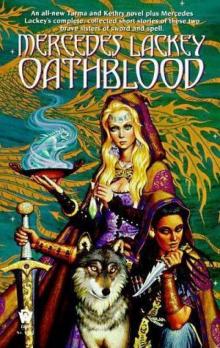 Oathblood v(vah-3
Oathblood v(vah-3 The Robin and the Kestrel
The Robin and the Kestrel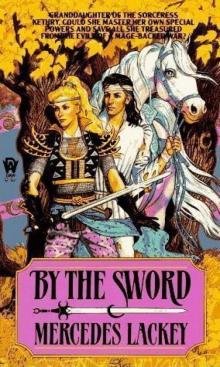 The Price Of Command v(bts-3
The Price Of Command v(bts-3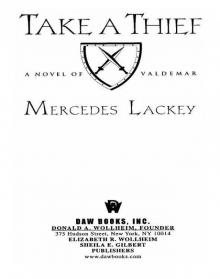 Valdemar 07 - Take a Thief
Valdemar 07 - Take a Thief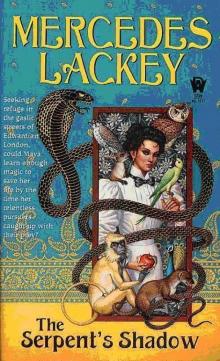 The Serpent's Shadow em-2
The Serpent's Shadow em-2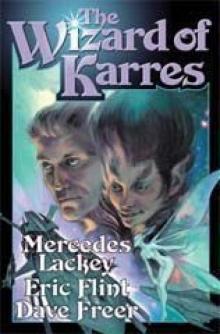 The Wizard of Karres wok-2
The Wizard of Karres wok-2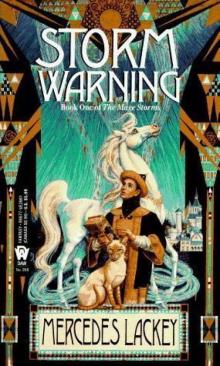 Storm Warning v(ms-1
Storm Warning v(ms-1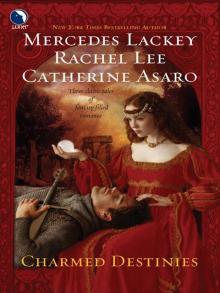 Charmed Destinies
Charmed Destinies Magic 101 (A Diana Tregarde Investigation)
Magic 101 (A Diana Tregarde Investigation)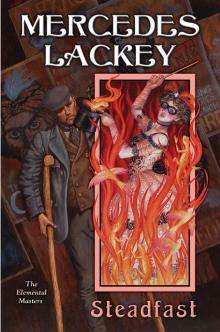 Steadfast
Steadfast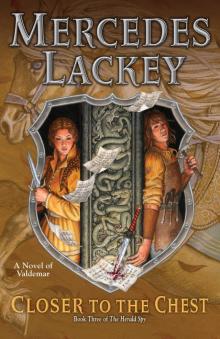 Closer to the Chest
Closer to the Chest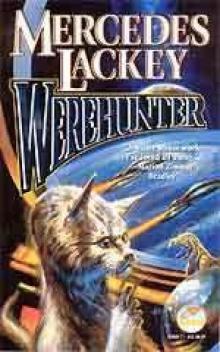 SKitty s-1
SKitty s-1 Nebula Awards Showcase 2016
Nebula Awards Showcase 2016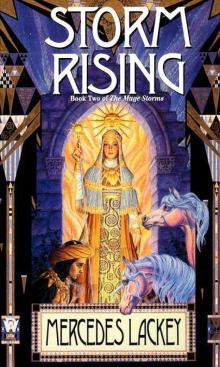 Storm rising
Storm rising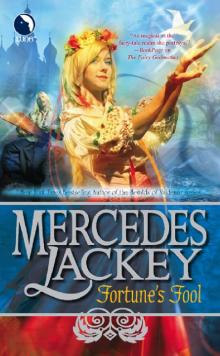 Fortune's Fool
Fortune's Fool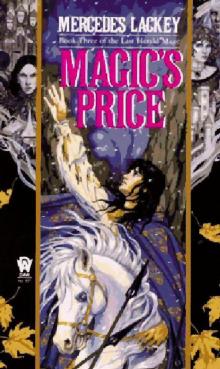 Magic's price
Magic's price![Valdemar 11 - [Owl Mage 02] - Owlsight Read online](http://i1.bookreadfree.com/i2/04/12/valdemar_11_-_owl_mage_02_-_owlsight_preview.jpg) Valdemar 11 - [Owl Mage 02] - Owlsight
Valdemar 11 - [Owl Mage 02] - Owlsight Storm Rising v(ms-2
Storm Rising v(ms-2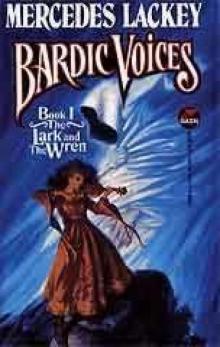 Lark and Wren bv-1
Lark and Wren bv-1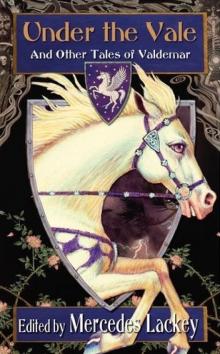 Under the Vale and Other Tales of Valdemar
Under the Vale and Other Tales of Valdemar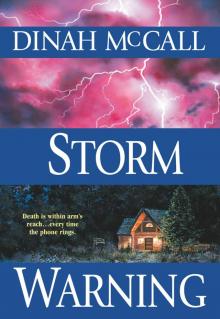 Storm Warning
Storm Warning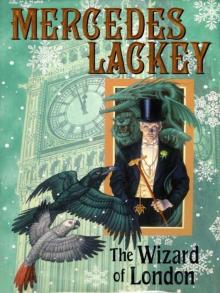 The Wizard of London
The Wizard of London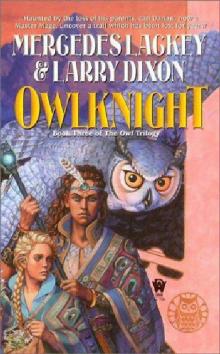 Owlknight
Owlknight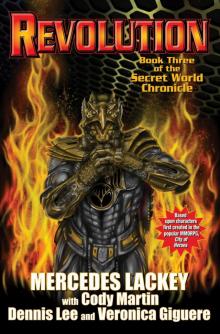 Revolution: Book Three of the Secret World Chronicle
Revolution: Book Three of the Secret World Chronicle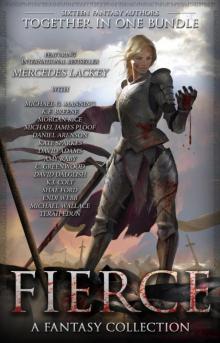 FIERCE: Sixteen Authors of Fantasy
FIERCE: Sixteen Authors of Fantasy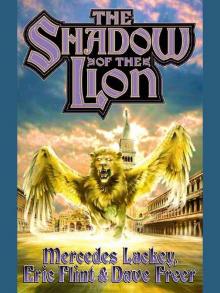 The Shadow of the Lion
The Shadow of the Lion![Valdemar 05 - [Vows & Honor 02] - Oathbreakers Read online](http://i1.bookreadfree.com/i2/04/07/valdemar_05_-_vows_and_honor_02_-_oathbreakers_preview.jpg) Valdemar 05 - [Vows & Honor 02] - Oathbreakers
Valdemar 05 - [Vows & Honor 02] - Oathbreakers And Less Than Kind
And Less Than Kind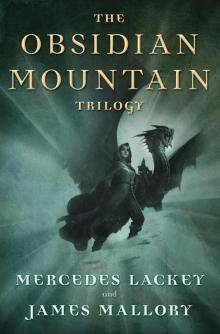 The Obsidian Mountain Trilogy
The Obsidian Mountain Trilogy Apex
Apex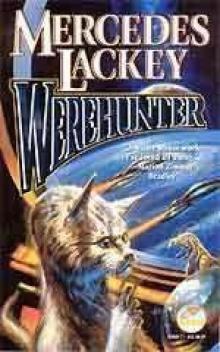 Werehunter (anthology)
Werehunter (anthology)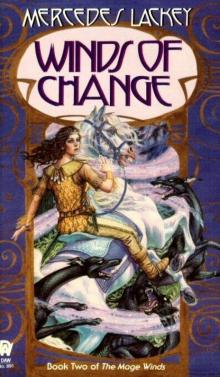 Winds of Change
Winds of Change![Satanic, Versus [Diana Tregarde series] Read online](http://i1.bookreadfree.com/i2/04/12/satanic_versus_diana_tregarde_series_preview.jpg) Satanic, Versus [Diana Tregarde series]
Satanic, Versus [Diana Tregarde series]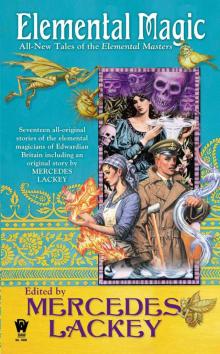 Elemental Magic: All-New Tales of the Elemental Masters
Elemental Magic: All-New Tales of the Elemental Masters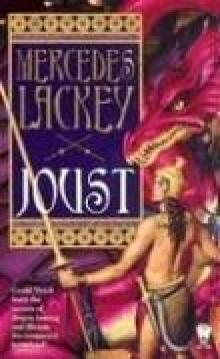 Joust
Joust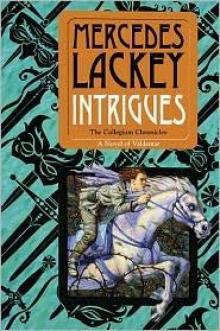 Intrigues: Book Two of the Collegium Chronicles (a Valdemar Novel)
Intrigues: Book Two of the Collegium Chronicles (a Valdemar Novel) A Ghost of a Chance bv-1
A Ghost of a Chance bv-1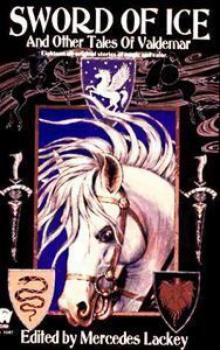 The Demon's Den v(-12
The Demon's Den v(-12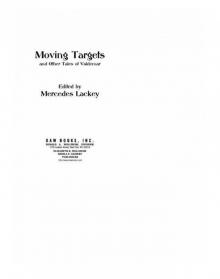 Moving Targets and Other Tales of Valdemar
Moving Targets and Other Tales of Valdemar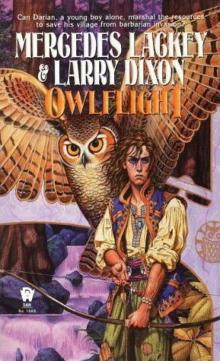 Owlflight v(dt-1
Owlflight v(dt-1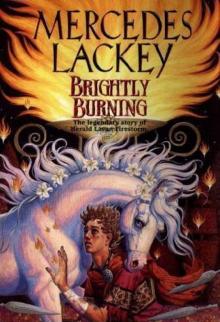 Brightly Burning v(-10
Brightly Burning v(-10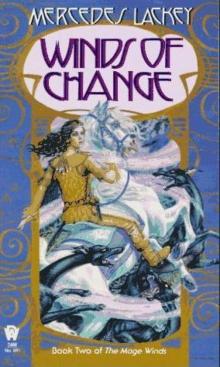 Winds Of Change v(mw-2
Winds Of Change v(mw-2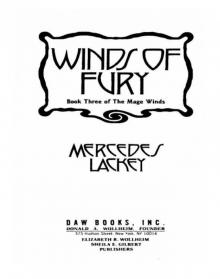 Winds of Fury
Winds of Fury Sword of Ice and Other Tales of Valdemar v(-100
Sword of Ice and Other Tales of Valdemar v(-100 Changes v(cc-3
Changes v(cc-3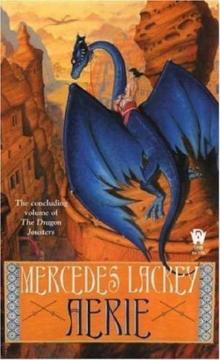 Aerie dj-4
Aerie dj-4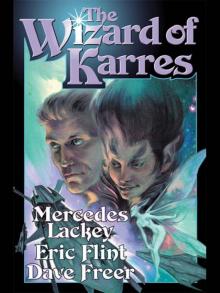 The Wizard of Karres
The Wizard of Karres![Sword Sworn [Vows EBOOK_TITLE Honor series] Read online](http://i1.bookreadfree.com/i2/04/12/sword_sworn_vows_ebook_title_honor_series_preview.jpg) Sword Sworn [Vows EBOOK_TITLE Honor series]
Sword Sworn [Vows EBOOK_TITLE Honor series]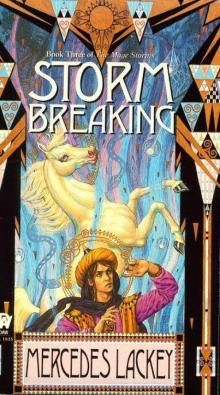 Storm breaking
Storm breaking![Valdemar 03 - [Collegium 01] - Foundation Read online](http://i1.bookreadfree.com/i2/04/13/valdemar_03_-_collegium_01_-_foundation_preview.jpg) Valdemar 03 - [Collegium 01] - Foundation
Valdemar 03 - [Collegium 01] - Foundation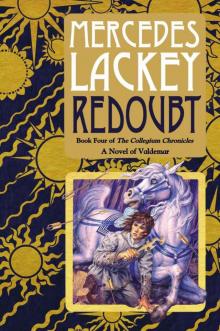 Redoubt: Book Four of the Collegium Chronicles (A Valdemar Novel)
Redoubt: Book Four of the Collegium Chronicles (A Valdemar Novel)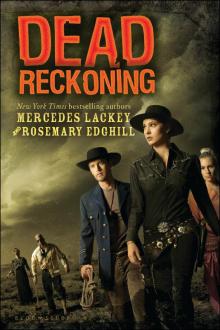 Novel - Dead Reckoning (with Rosemary Edghill)
Novel - Dead Reckoning (with Rosemary Edghill)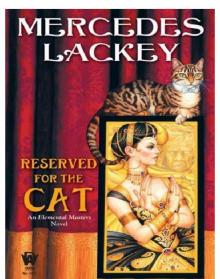 Reserved for the Cat
Reserved for the Cat